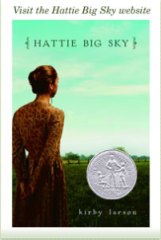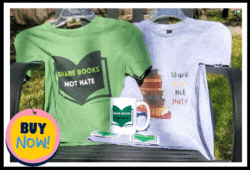Revision update: Halfway through chapter 10 of 29. Goal: To be finished by the end of the month.
Today, I’m thrilled to have an interview with Newbury Honor winner Kirby Larson. I met Kirby at the Austin SCBWI conference, where she gave an awesome talk about her journey from unpublished writer to her current success and all the peaks and valleys in between. I asked her to answer a few questions on research, both the research she did for her fictional Hattie Big Sky (2007 Newbury Honor book) and the research she nows does for her non-fiction books. She also talked about writing with a partner and writing on your own.
But, before we get to Kirby’s wisdom, tomorrow I’m at the Houston SCBWI conference with another incredible lineup: author Cynthia Leitich Smith, Balzer & Bray/HarperCollins assistant editor Ruta Rimas, Henry Holt creative director Patrick Collins, Simon & Schuster senior editor Alexandra Cooper, Scholastic senior editor Lisa Ann Sandell, Harvey Klinger agent Sara Crowe and National Geographic Children’s Books editor-in-chief Nancy Feresten. So check in next week for reports from the conference.
And now, onto Kirby…
 You said at the Austin SCBWI conference that you did a lot of research for Hattie Big Sky. Can you tell us about the work you did and how the research helped you develop the idea for the book?
You said at the Austin SCBWI conference that you did a lot of research for Hattie Big Sky. Can you tell us about the work you did and how the research helped you develop the idea for the book?
KL: I was an abysmal student of history so I knew nothing about homesteading in the early 20th century, nor even about WWI. I initially thought I might be doing something like a more grown-up version of the Little House books. But when I became aware of the tensions and prejudice of those particular war years, I knew there was a bigger story to tell. I worked on Hattie Big Sky between 2000 and 2004 and, while there was a goodly amount of information available on the Internet, it wasn’t like it is now. I relied heavily on inter-library loan to get books and journals not available in our library system, and I took three or four trips to Montana to read primary sources firsthand. One of the best resources was the local newspaper — the Wolf Point, Montana, Herald; I read every single issue put out in 1918. I found it so helpful not only to gather attitudes, but social mores, manners of speech and what things cost. All the more reason to mourn the demise of newspapers in our country.
After Hattie Big Sky, you started writing non-fiction books with your partner Mary Nethery. Why did you decide to write with a partner and why Mary Nethery?
 KL: The truth is that Mary and I began Two Bobbies: A True Story of Hurricane Katrina, Friendship and Survival before Hattie Big Sky came out; maybe before it sold; I can’t remember. We’d both been going through a tough time in our writing lives and, when I heard a wonderful writer named Pamela Greenwood talk about the benefits of collaborative writing, I was intrigued. And there is no one else I could write with (or, shall we say, who would be able to put up with me!) than my friend of many years, Mary Nethery. We have always been each other’s best cheerleaders and critics; we got each other’s work. I knew we’d make a good team.
KL: The truth is that Mary and I began Two Bobbies: A True Story of Hurricane Katrina, Friendship and Survival before Hattie Big Sky came out; maybe before it sold; I can’t remember. We’d both been going through a tough time in our writing lives and, when I heard a wonderful writer named Pamela Greenwood talk about the benefits of collaborative writing, I was intrigued. And there is no one else I could write with (or, shall we say, who would be able to put up with me!) than my friend of many years, Mary Nethery. We have always been each other’s best cheerleaders and critics; we got each other’s work. I knew we’d make a good team.
How do you and Mary find the stories for your non-fiction books?
KL: Complete serendipity! Mary actually found both of the story ideas that panned out — one, by channel surfing and coming across a segment on Anderson Cooper’s 360 (Two Bobbies) and the other, by reading an article in the paper (Nubs). People have since sent us ideas, but we kind of need to find them ourselves. To be more accurate, I should say, Mary needs to find them! 😉
How much research do you do for your non-fiction books? How does it compare to the research you did for your fictional Hattie Big Sky?
KL: The depth of the research is similar, certainly. Since the picture books are more focused — on a very specific time period/event — it doesn’t take as long. But we still make ourselves as crazy trying to corroborate a particular detail with the picture books as I did with Hattie.
How do you and Mary approach the research? Are there specific things you do, library, interviews, Internet?
 KL: Mary and I like to conduct the interviews together (generally, via phone). That way, there are two sets of ears to pick up on what we’re hearing. The picture books feature events and people in contemporary times, so much of the research was by phone interview or in-person interview. Hattie Big Sky was set in 1918, so most of the research happened by reading — journals, diaries, books, magazine articles. I would comb all of the bibliographies of everything I read to make sure I wasn’t missing anything. The Internet (then) was great for recipes, folk lore, home remedies, songs/music, etc. Now, with the Library of Congress more online, the Internet is even more helpful in doing research.
KL: Mary and I like to conduct the interviews together (generally, via phone). That way, there are two sets of ears to pick up on what we’re hearing. The picture books feature events and people in contemporary times, so much of the research was by phone interview or in-person interview. Hattie Big Sky was set in 1918, so most of the research happened by reading — journals, diaries, books, magazine articles. I would comb all of the bibliographies of everything I read to make sure I wasn’t missing anything. The Internet (then) was great for recipes, folk lore, home remedies, songs/music, etc. Now, with the Library of Congress more online, the Internet is even more helpful in doing research.
How do you and Mary approach the writing? Do you write together or work on different parts?
KL: Mary lives in Eureka, California, and I live in Kenmore, Washington, so we can’t really work together. We generally each take a section of the story and write it — let’s say I tackled the opening of Two Bobbies. I’d construct a draft and send it to Mary, who would comment on it/critique it. I’d tweak that, while she was working on the next section. The sections would be emailed back and forth each week. Every Friday afternoon, we’d have long phone conversations about that week’s work. Usually with an adult beverage at hand.
HA! Those adult beverages can help with the writing. 🙂 Having worked on fiction and non-fiction, alone and with a partner, what are the differences/difficulties of each?
KL: Writing with a partner is terrific, and Mary and I are hoping to do many more books together. By focusing on narrative non-fiction picture books, we selected a genre that neither of us had tackled individually. That left us each free to continue to explore our individual writing passions — Mary’s are fiction picture books and mystery/suspense novels; mine are historical novels. The only downsides, for us, to writing together are the geographical hurdles and the obligations we’ve got for our individual careers. The downside to writing by yourself is … writing by yourself!! I am so thankful to be able to do both.
What advice would you give to a writer who wants to get into non-fiction books?
KL: Have Mary find your stories for you.
Seriously, I think it’s not that different than any kind of writing. Find what moves you, what you really care about. Dive in! Get all the information you can and then some. Find the story arc in that non-fiction idea and let it shine. That will be what hooks your readers.
What advice would you give to writers considering working with a partner?
KL: Mary and I spent a lot of time talking about what our process would be before we even knew what in the heck we’d write about; because our friendship is so important to each of us, we didn’t want ANYTHING to harm it. The bottom line for us: nothing would go into a book if we didn’t both agree on it. That “rule” was our safety net. I also think it’s critical to select a partner whose writing you completely admire and who respects your work, too. Mary and I feel like complete equals in our process, and we work very hard to write in a voice that is a blend; I don’t think you can pick out what either of us may have written. Also, make sure the person you work with has a sense of humor. That is completely essential.
Great advice and info, Kirby. Thanks very much.
Got any questions about research or writing with a partner? Put them in the comments.
Write On!




6 Responses
Oh, my daughter came home from kindergarten talking about Two Bobbies and insisting that we buy our own copy!
It’s such a sweet book, Corey. That’s great that your daughter loved it.
Thanks for posting this interview. Great tips for research. And it’s interesting to hear about how writing partners work together.
Samantha, I nocice we have similar writing goals for February!
You’re welcome, Andrea. Glad you found the interview useful.
And how funny that we’re in synch in our revisions. I’m also around chapter 10. Good luck with yours. Let’s check in with each other and see how we’re doing.
Thanks for sharing this interview on the Carnival of Children’s Literature. I have been thinking about writing a non-fiction book for children and this was very helpful in directing some of my thinking.
That’s great, Kathy B. Check out Kirby’s books. They find great stories.